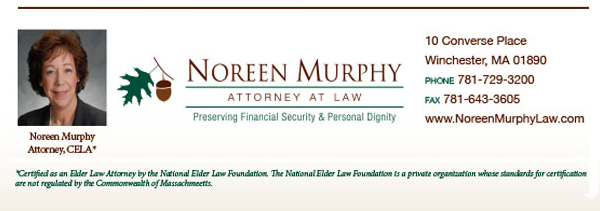
What Trusts Can Help You Accomplish
There are many types of trusts, capable of helping you accomplish a variety of goals. However, when most people think about trusts, a Revocable Living Trust is the one they have in mind. A Revocable Living Trust allows you to maintain complete control over your assets while you are alive and after you have passed away. You don't have to transfer your assets to the trust all at once, you can do so over time and even add to the trust as you acquire new assets. Keep in mind, however, that only assets in the trust avoid probate. Other benefits of a Revocable Living Trust include:
Trusts that can help you meet specific estate planning goalsAs we have mentioned, there are a wide range of trusts. Here are some that can be used to achieve specific planning goals. Generation-Skipping Trust (GST). Let's say your son has remarried and you're worried that his second wife might not pass his inheritance to the children from your son's first marriage--that is, your grandchildren. Or maybe one of your children is not responsible enough to handle an inheritance on his or her own and you want to make sure your grandchildren will receive a portion of your assets. With a Generation-Skipping Trust, the assets put into the trust will be transferred to your grandchildren when the GST goes into effect. A GST does not necessarily disinherit your children. The trust can be structured so that your children can draw on the income/earnings from the trust while your grandchildren stand to inherit the balance of the trust. Qualified Terminable Interest Property Trust (QTIP). A QTIP is an excellent tool for blended families. It allows you to pass earnings from trust assets to one person while the assets themselves remain in the trust for the benefit of another person. Why is this useful? Well, what if you and your spouse both have children from previous marriages? You want to make sure your spouse is provided for after you pass away, but you also want to ensure that the children from your spouse's first marriage won't receive most or all of your estate. With a QTIP, your spouse can access the income from the trust while your children will inherit as much of the trust's assets as you see fit. Or what if you're worried that your spouse will remarry and the new spouse takes marital ownership of your estate? Again, the QTIP allows you to provide for your spouse and your children. IRA Trust. Typically, the beneficiaries named in your IRA will receive the IRA's money when you pass away. However, if one of your beneficiaries is, for example, a minor child, an IRA Trust can allow you to have the payments distributed over time after your child becomes an adult. An IRA trust can also be structured like a QTIP, allowing you to support a surviving spouse with trust income while leaving the assets of the trust to your children or other beneficiaries. Special Needs Trust. If you have a loved one with special needs, A Special Needs Trust allows you to create a fund to augment services and care not provided by government assistance programs such as Supplemental Security Income (SSI) while at the same time maintaining eligibility for these programs. The trust can include money for travel expenses, entertainment, wheelchair-accessible transportation, education, advanced dental and medical care, and more. In essence, a Special Needs Trust can provide for services capable of dramatically improving the quality of life of your loved one with special needs. Credit Shelter Trust (CST). This trust is an excellent way for high-net-worth married couples to minimize or avoid federal estate taxes. How? Both spouses could have a provision in their wills setting up the CST. When the first spouse passes away, the CST kicks in and is funded up to the federal estate tax exemption amount. The assets in the CST are no longer part of the taxable estate but the surviving spouse can still use a small percentage of that money for income. When the second spouse dies, the funds in the Credit Shelter Trust can pass to heirs free of federal estate taxes.
|
Taxes On Social Security Benefits And How To Avoid Them |
|

|
|
Many people are surprised to learn that their Social Security benefits can be subject to federal taxation. Whether your benefits are taxed depends on what is known as your "provisional income." This is your adjusted gross income (not counting Social Security benefits) plus nontaxable interest and half of your Social Security benefits. For people filing as individuals or heads of household with provisional incomes of less than $25,000, Social Security benefits are not taxed. For couples filing joint returns, the figure is $32,000. Unfortunately, individuals with provisional income of between $25,000 and $34,000, or couples filing jointly with provisional income of between $32,000 and $44,000, up to 50% of Social Security benefits may be taxable. In the case of individual filers with provisional incomes above $34,000 or joint filers whose provisional incomes exceed $44,000, up to 85% of Social Security benefits may be subject to taxation. A recent article on kiplinger.com offers some strategies to avoid, or at least mitigate, taxes on Social Security benefits. Withdraw money from your tax-free Roth IRAs. Tax-free withdrawals from a Roth IRA or Roth 401(k) are not included in your adjusted gross income. Rolling over money from your traditional IRA or 401(k) to a Roth IRA years before you start receiving Social Security benefits is an excellent way to avoid taxes later in retirement. Of course, you will have to pay income taxes when you make the conversion, but you can tap the account tax-free after that. Purchase a Qualified Longevity Annuity Contract. You can invest up to $125,000 from your IRA or 401(k) in a deferred-income annuity called a Qualified Longevity Annuity Contract (QLAC). The money in your QLAC is ignored when figuring your required minimum distribution, so you can reduce the size of your distribution, lower your income and cut your tax bill. Give your required minimum distribution to charity. If you are 70½ or older, you can give up to $100,000 per year to charity from your IRAs tax-free. Your gift counts as the required minimum distribution but is not included in your adjusted gross income. Be careful with income investments. You can structure your portfolio to minimize the income it generates. This approach makes particular sense if your portfolio's income is being reinvested.
|



